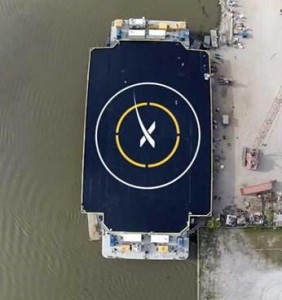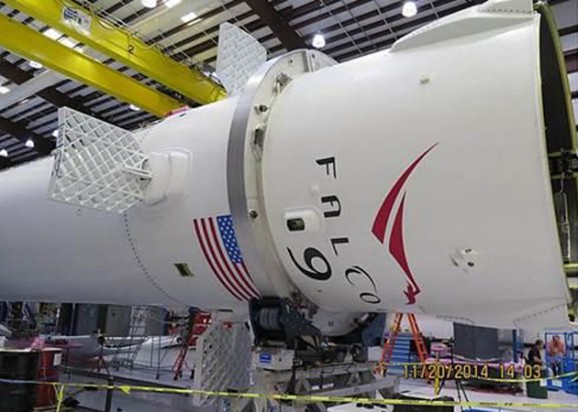SpaceX Plans To Use These Drones For Reusable Rocket Landings
This article is more than 2 years old
 If you’ve been following Elon Musk and SpaceX, you know that one of the ways the company drastically decreases the cost of transporting cargo (and eventually humans) into space is by the implementation of reusable rockets, such as the Grasshopper and the Falcon 9, the rocket that will eventually launch the Dragon capsule. EMusk recently announced a new addition to this plan: autonomous landing pads that serve as movable launch and recovery platforms for those rockets.
If you’ve been following Elon Musk and SpaceX, you know that one of the ways the company drastically decreases the cost of transporting cargo (and eventually humans) into space is by the implementation of reusable rockets, such as the Grasshopper and the Falcon 9, the rocket that will eventually launch the Dragon capsule. EMusk recently announced a new addition to this plan: autonomous landing pads that serve as movable launch and recovery platforms for those rockets.
 Even though the concept might seem to be a no-brainer, reusable rockets are difficult to develop. Fuel comprises most of the mass of a rocket, which leaves little room for the rest, not to mention payload. But SpaceX seems to have figured out the trick. Reusable rockets also need engines capable of restarting, as well as a large fuel capacity and altitude maneuvering systems. They have to be able to regulate their own landing in order to touch down safely and in a place where they can be recovered. That’s one way the drone platforms are uniquely suited to their jobs, they provide a solid base for a rocket landing, even in the middle of the water.
Even though the concept might seem to be a no-brainer, reusable rockets are difficult to develop. Fuel comprises most of the mass of a rocket, which leaves little room for the rest, not to mention payload. But SpaceX seems to have figured out the trick. Reusable rockets also need engines capable of restarting, as well as a large fuel capacity and altitude maneuvering systems. They have to be able to regulate their own landing in order to touch down safely and in a place where they can be recovered. That’s one way the drone platforms are uniquely suited to their jobs, they provide a solid base for a rocket landing, even in the middle of the water.
The 300-foot by 100-foot landing pad drones have thrusters much like the ones used by ocean oil rigs, which allow them to course-correct to the extent that they can remain in place under a landing rocket, even when the waters toss them around. That ability, coupled with SpaceX’s rockets’ “hypersonic grid fins,” which allow it to control its own landing, significantly raise the odds of a safe landing.
SpaceX has already demonstrated the ability of the Falcon 9 rocket’s first stage to achieve a soft splashdown in the ocean. While others typically land in the ocean, most of the time they plunge into the water with such force that the structural damage renders them unusable. Given how fast these rockets move it’s not too hard to imagine. Instead of using parachutes to slow it down, the Falcon 9 uses engine bursts and retractable landing legs. Now that SpaceX has achieved two soft water landings, they are ready to try a similar landing on the hard surface of a drone landing pad, an important step in the implementation of the cost-saving reusable rocket system.












